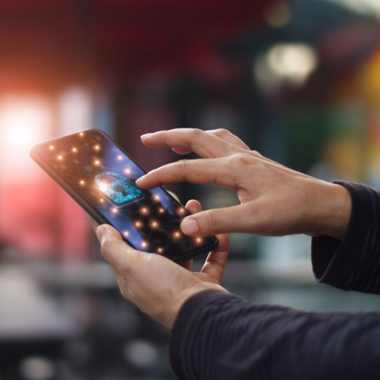
- Three minutes read
Are vehicles the next payment platforms?
Developments of the Internet of Things and voice activated technology mean that consumers will soon be able to make online purchases through their car without taking their hands off the wheel.
For many people, the commute is an integral aspect of the their weekly or even daily routine. In the not too distant past this time spent travelling to and from work was all but lost; commuters sitting in a car or train simply didn’t have the tools at their disposal to be productive during this time.
However, with the introduction of smartphones and other internet enabled devices, the commute was transformed for public transport users. Access to emails, information online, eCommerce, and unlimited entertainment transformed the commute from one filled with boredom and frustration to one of usefulness when things could get done. In an age where people are increasingly time-poor, giving them access to online services during their commute is exceptionally valuable.
Cars and the Internet of Things: The next step in upgrading the commute
For car drivers, on the other hand, until now very little has changed on the commute since the pre-internet days. Even when stuck in traffic drivers cannot interact with their mobile devices in any meaningful way (and legally shouldn’t be trying to at all); this prevents access to the ‘any time, any place’ vision of online access enjoyed elsewhere.
All that is set to change though, as the expansion of the Internet of Things continues to move forward at pace.
It is predicted that by 2020 90% of new cars will be internet connected. One consequence of this is that it will improve a car’s functionality such as safety and navigation; another is that it will enable cars to be used as a device for eCommerce. This is IoT in the wild, and in practice. Consumers will be able to use their cars as the instrument for making purchases; for example you will be able to pay for your gas just by driving up to the pump, or your food by just going through the drive through. Think of a road toll that automatically takes payment when you cross it if you have an account, but on a much grander scale.
Are vehicles the next payment platforms?
But that is not all, and this is where the really good news for road commuters comes in. As well as the development of the roles of cars in the IoT, the evolution of biometrics, and in particular voice activated technology, will mean that drivers will be able to interact with the wider internet without compromising the safety of their vehicle.
Smart assistants such as Alexa and Siri may be able to help drivers shop through voice activated payments just by speaking while on the commute. This satisfies a need of busy consumers who want to make the most of their time; 82% of millennials with long car commutes said they would shop more if payments were integrated into their cars. This sort of commerce enablement provides value for time poor consumers, retailers and the technology providers in between.
Globally, there is a huge opportunity to turn the car into both a payments and a commerce platform. People are already spending time and money while commuting. Why not facilitate this and increase the convenience of it, while creating stickier relationships with drivers? For example, this opens many new direct revenue streams for auto manufacturers, as they will be able to sell value added services, amenities and repairs to their drivers directly through vehicles. As payments fade into the background on connected devices and integrated applications, why shouldn’t your car join the IoT revolution as well?




